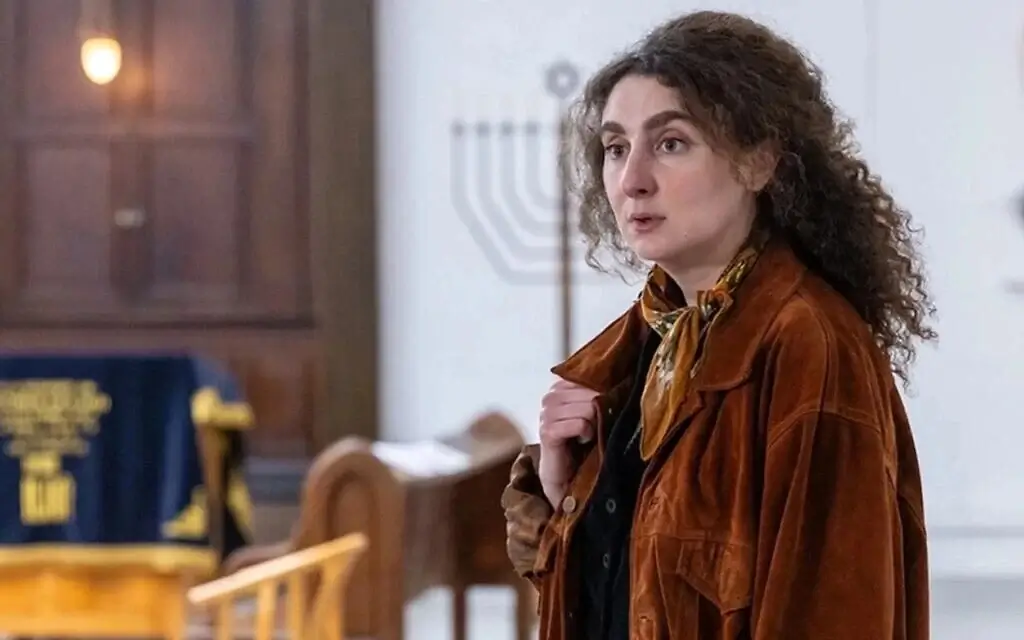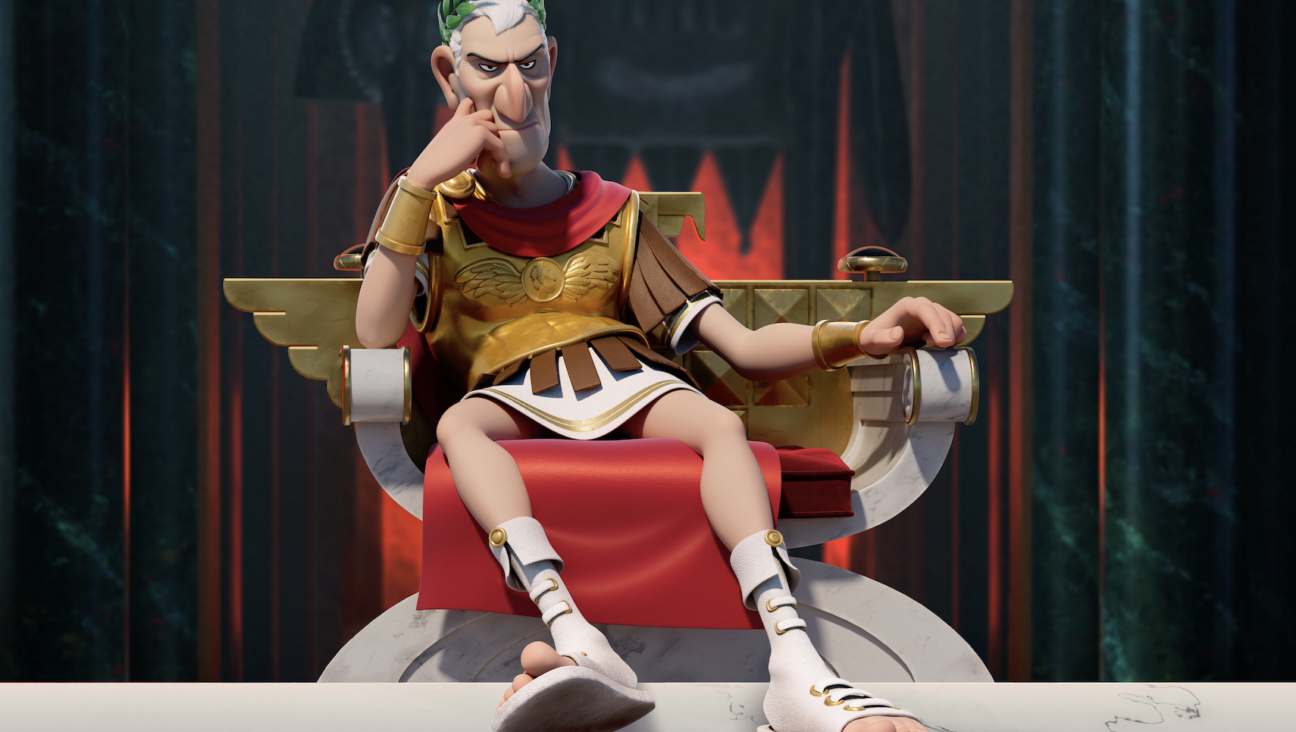Of Course We Must ‘Write Our History’ — But Do We Need To Restage It?

Actor Wojciech Zielinski as Oyneg Shabes member Abraham Lewin. Image by Photo Credit: Anna Wloch
After the establishment of the Warsaw Ghetto in 1940, Nazi cameramen recorded countless rolls of film. Much of the material captured was repurposed for propaganda films that portrayed Europe’s Jewry as unhygienic, uncivilized and animalistic. While this documentary footage often relied on subjects that were not directed, the narrative and the conditions surrounding them were contrived and controlled. The Germans crammed the city’s Jews into close quarters, filled their already cramped squares with refugees and reduced them to indigence.
But a group of about 60 Jewish Poles, with no equipment save their eyes, ears and pens documented a counter narrative, working tirelessly and secretly to tell the true story from a Jewish point of view.
This group, the “Oyneg Shabes,” is now the subject of not just a film, but a theatrical event. “Who Will Write Our History,” directed, written and produced by Roberta Grossman, executive produced by Nancy Spielberg and adapted from Samuel D. Kassow’s book of the same name, is out in select cinemas now with a global event screening scheduled for Holocaust Memorial Day January 27. It will be shown simultaneously at Auschwitz and Holocaust museums and streamed on Facebook Live with the imprimatur of UNESCO and the World Jewish Congress. The project’s ambitions are grand and, by rights, should be.
Led by historian Emanuel Ringelblum the Oyneg Shabes was a clandestine branch of the Jewish Self-Help, a charitable organization formed after the Nazi invasion of Poland. The band of journalists, artists and scholars collected, recorded and ultimately buried some 60,000 pages of witness testimony, drawings, pamphlets and ephemera of ghetto life. This archive of primary source material, discovered in caches over the years, constitutes the bulk of the film’s narration.
No expense was spared. Academy Award Winner Adrien Brody and three-time Oscar nominee Joan Allen narrate as Ringelblum and the journalist Rachel Auerbach respectively, from their own firsthand accounts. But Brody and Allen aren’t the only actors to fill the roles. In the thick of black-and-white footage and talking head context, Grossman interjects a costume period drama.
Polish actor Piotr Glowacki plays Ringelblum in Yiddish and Polish. Jowita Budnik plays Auerbach. Their scenes are brought up to date with glossy, muted color production value. In a director’s statement Grossman wrote her team worked alongside scholars for six months to ensure everything that appeared on screen in these sequences was true to the era. But juxtaposed with real footage of a poor, sunken-cheeked child fidgeting with his coat; the streets choked with people; the carts of the dead, these scenes with their stilted dialogue and set-designed recreations scan as bogus. (The choppy composite green-screening of actors over archival film and the characters’ tendency to poetically fade into frame from the ether don’t help.)
There’s a certain way actors behave in a documentary recreation. In a bad one, they move around a space with heavy purpose, like they’re yoked to the profundity of their subjects or to a period in time. It’s as if they forget, in the immensity of their task, their most essential function: To appear human. And to be human, even in the midst of a knowing episode in history, is to never be fully aware of one’s place in it. Even the members of Oyneg Shabes, palpably aware they were witnessing an epochal tragedy, surely didn’t live their every waking moment as such.
And so we have Ringelblum’s worried wife (Karolina Gruszka) linger for a loaded second in a doorway, watching her husband work, before turning away to the hall. We have passersby stopping to listen to a musician’s perfunctory plangent violin. We have people peering out their windows to witness some show of violence one would expect them to be inured to. We have, in one instance, a powerful monologue about hunger — something we’ve seen already in the form of real, emaciated bodies – recited in voiceover as a well-fed Polish actor trips over a body in the street. While the words retain their impact, these dramatizations can’t match them.
In an attempt to bring us closer to the past, Grossman draws us further away. It’s true that the narrative the Oyneg Shabes hoped to preserve was not a cinematic one. The group didn’t have a documentary film crew and operated in secret, but in trying to render their operation in the cinematic language of today something essential is lost.
There’s a version of this film that could capably tell Ringelblum, Auerbach and their group’s history through narration and photographs. The filmed footage would, necessarily, be taken mostly from a German perspective, but the words – the elements most essential to the Oyneg Shabes’ mission – would provide the fuller story.
PJ Grisar is the Forward’s culture intern. He can be reached at [email protected].
The Forward is free to read, but it isn’t free to produce

I hope you appreciated this article. Before you go, I’d like to ask you to please support the Forward.
Now more than ever, American Jews need independent news they can trust, with reporting driven by truth, not ideology. We serve you, not any ideological agenda.
At a time when other newsrooms are closing or cutting back, the Forward has removed its paywall and invested additional resources to report on the ground from Israel and around the U.S. on the impact of the war, rising antisemitism and polarized discourse.
This is a great time to support independent Jewish journalism you rely on. Make a gift today!
— Rachel Fishman Feddersen, Publisher and CEO
Support our mission to tell the Jewish story fully and fairly.
Most Popular
- 1

Culture Cardinals are Catholic, not Jewish — so why do they all wear yarmulkes?
- 2

Fast Forward Ye debuts ‘Heil Hitler’ music video that includes a sample of a Hitler speech
- 3

News School Israel trip turns ‘terrifying’ for LA students attacked by Israeli teens
- 4

Fast Forward Student suspended for ‘F— the Jews’ video defends himself on antisemitic podcast
In Case You Missed It
-
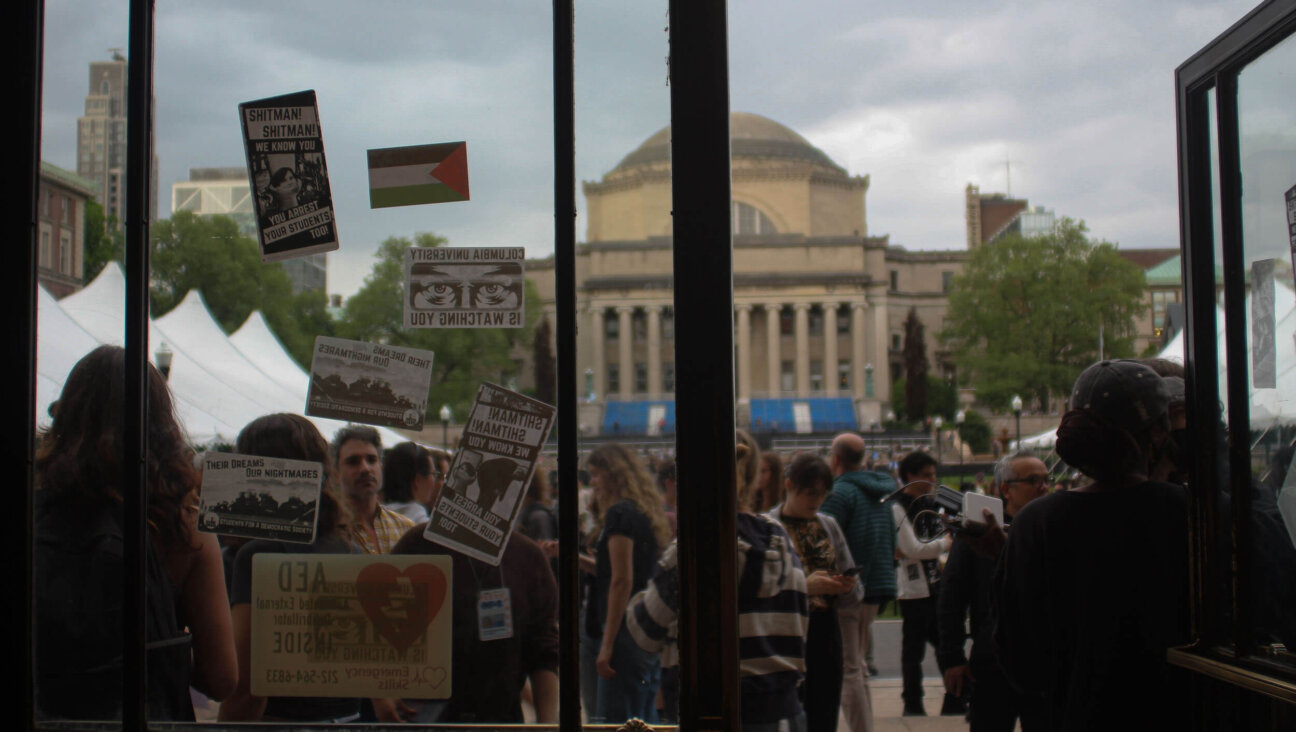
Opinion This week proved it: Trump’s approach to antisemitism at Columbia is horribly ineffective
-
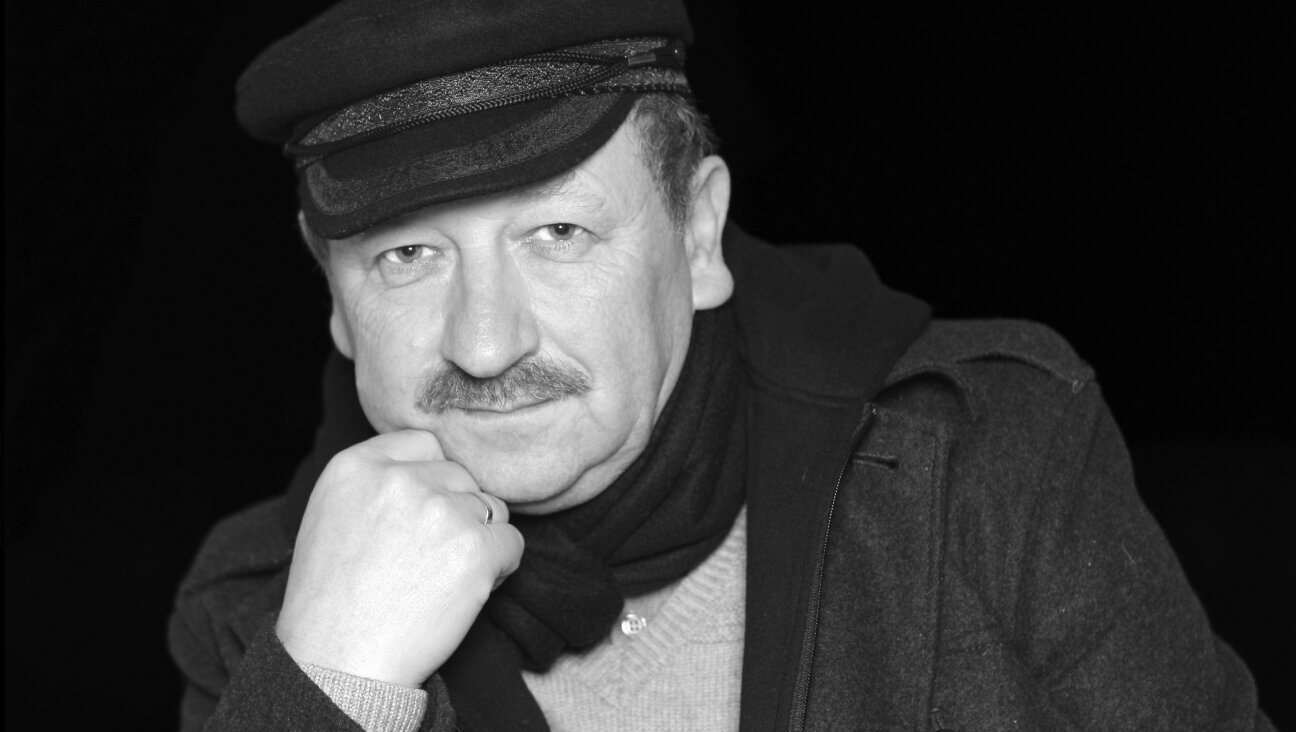
Yiddish קאָנצערט לכּבֿוד דעם ייִדישן שרײַבער און רעדאַקטאָר באָריס סאַנדלערConcert honoring Yiddish writer and editor Boris Sandler
דער בעל־שׂימחה האָט יאָרן לאַנג געדינט ווי דער רעדאַקטאָר פֿונעם ייִדישן פֿאָרווערטס.
-

Fast Forward Trump’s new pick for surgeon general blames the Nazis for pesticides on our food
-
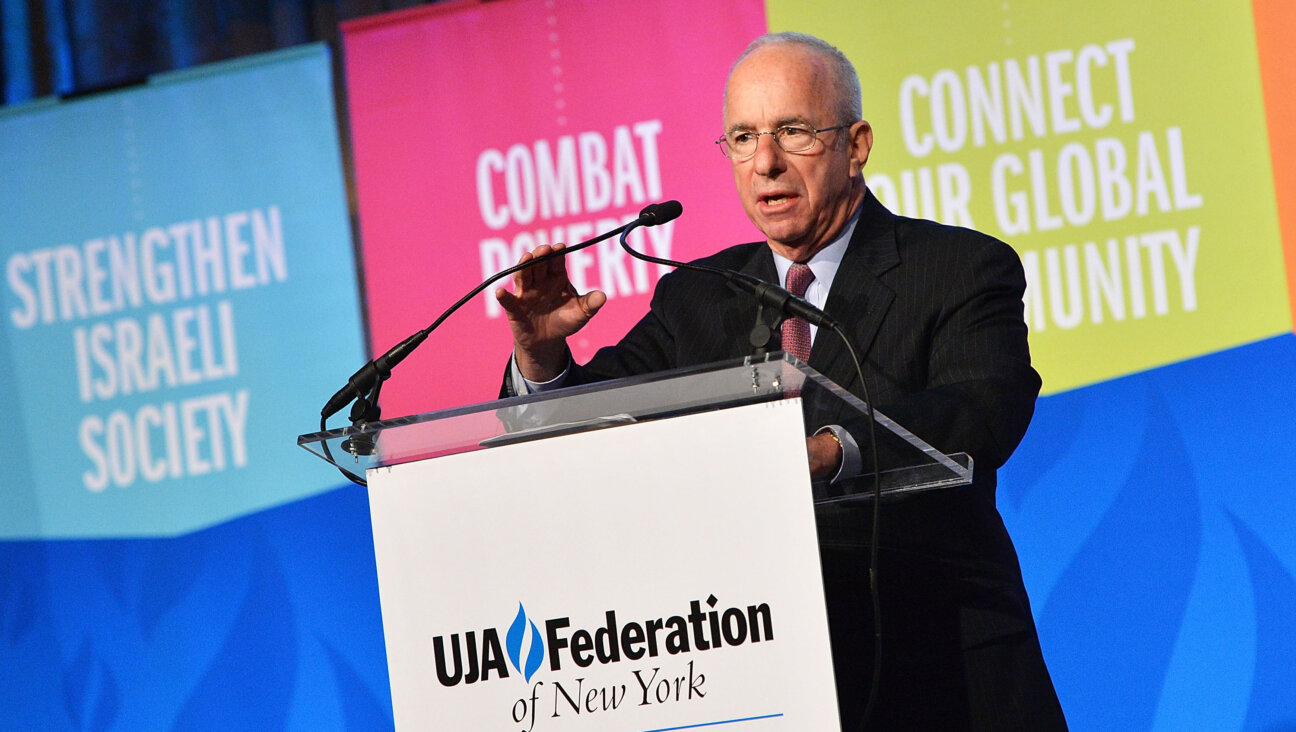
Fast Forward Jewish feud over Trump escalates with open letter in The New York Times
-
Shop the Forward Store
100% of profits support our journalism
Republish This Story
Please read before republishing
We’re happy to make this story available to republish for free, unless it originated with JTA, Haaretz or another publication (as indicated on the article) and as long as you follow our guidelines.
You must comply with the following:
- Credit the Forward
- Retain our pixel
- Preserve our canonical link in Google search
- Add a noindex tag in Google search
See our full guidelines for more information, and this guide for detail about canonical URLs.
To republish, copy the HTML by clicking on the yellow button to the right; it includes our tracking pixel, all paragraph styles and hyperlinks, the author byline and credit to the Forward. It does not include images; to avoid copyright violations, you must add them manually, following our guidelines. Please email us at [email protected], subject line “republish,” with any questions or to let us know what stories you’re picking up.









